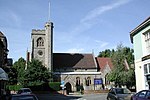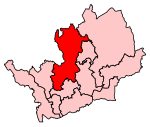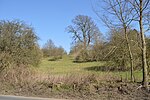Welwyn Rural District
Districts of England abolished by the Local Government Act 1972Districts of England created by the Local Government Act 1894Local government in HertfordshireRural districts of EnglandUse British English from September 2021
Welwyn Rural District was a rural district in Hertfordshire, England from 1894 to 1974, covering an area in the centre of the county.
Excerpt from the Wikipedia article Welwyn Rural District (License: CC BY-SA 3.0, Authors).Welwyn Rural District
Prospect Place, Welwyn Hatfield
Geographical coordinates (GPS) Address Nearby Places Show on map
Geographical coordinates (GPS)
| Latitude | Longitude |
|---|---|
| N 51.829 ° | E -0.213 ° |
Address
Prospect Place 46
AL6 9ER Welwyn Hatfield
England, United Kingdom
Open on Google Maps





